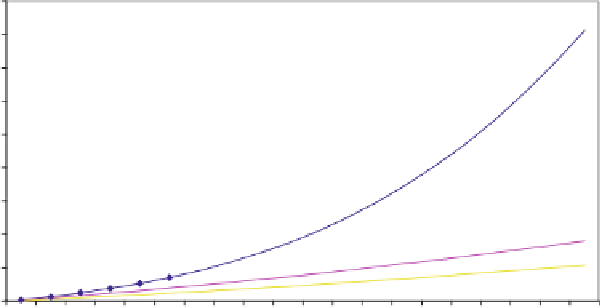Agriculture Reference
In-Depth Information
the project will be the Ikalahan-Kalanguya indigenous communities, local NGOs,
the DENR, project monitoring team, and the funding organization.
The project has two major components: agroforestry and reforestation. The agro-
forestry component will involve the introduction of fruit trees to existing upland
farms (typically with annual crops such as corn and rice). Aside from the environ-
mental benefits, fruit trees will also be able to provide livelihood for poor upland
farmers. Only native species and those that have been introduced in the Philippines
in the last 10 years will be used, with priority for those species already growing in
and around the project area. For reforestation, the following species have initially
been identified: mostly indigenous Dipterocarp species, with
Bischofia javanica,
and
Alnus nepalensis
which are observed to be favorable to wildlife and also intended to
rapidly establish vegetative cover in the area. Indigenous species will be planted in
more favorable areas and underneath fast growing nurse trees.
The grassland areas to be reforested have been historically covered with grasses
since at least 1990 and are likely to remain so without the project activity. Thus the
project sites are expected to regenerate as they have for decades, at a level consid-
ered insignificant under the CDM.
The environmental service (carbon sequestration) to be provided by the project has
been estimated in Fig. 17.2 under three growth rate scenarios. This simulation was
done based on information on tree growth rates in the area supplemented with data
from other parts of the country. The main purpose of the exercise was to assist the
Kalahan indigenous people obtain funding for the carbon sequestration service they
could provide. For this purpose the estimated carbon sequestration rates will suffice
since the objective is to show potential buyers the expected range of benefits.
450,000
High Scenario
Medium Scenario
Low Scenario
400,000
350,000
300,000
250,000
200,000
150,000
100,000
50,000
0
Year
Fig. 17.2
Estimated net cumulative CO
2
-e removals by the proposed Kalahan Reforesation
Project, The Philippines




















Search WWH ::

Custom Search